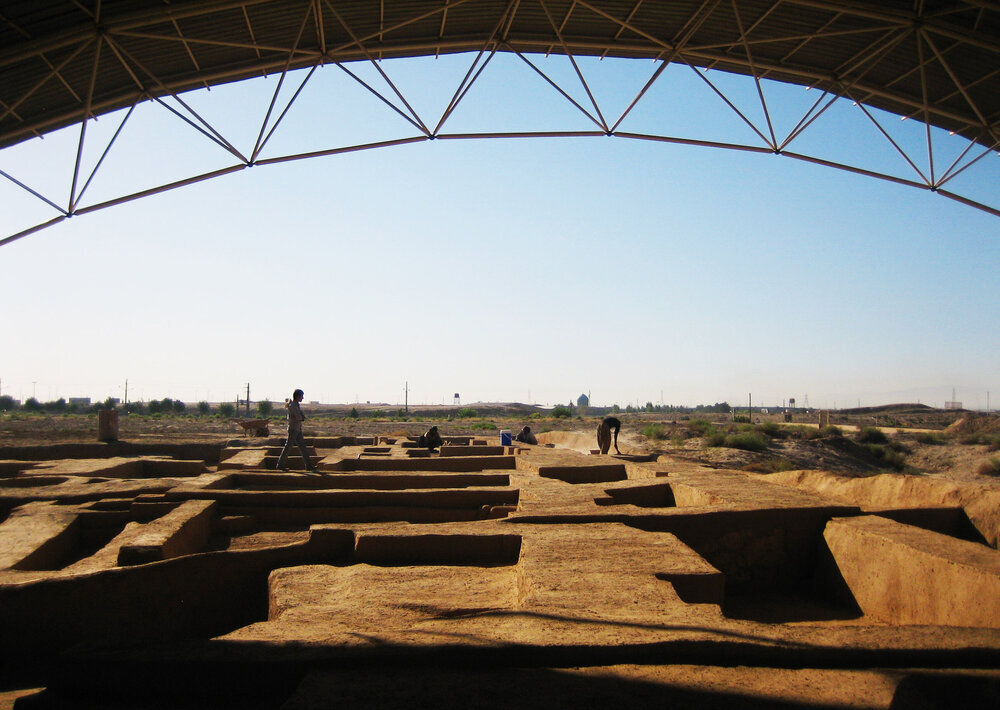7,000-year-old hill represents Qom’s civilization and culture, official says

TEHRAN - The 7,000-year-old Qoli Darvish Hill, which is situated in Qom province, shows the antiquity and originality of the civilization and culture of the province, the deputy provincial tourism chief has said.
Several ancient artifacts such as a temple, pottery tools, and a water supply system were discovered in this area, which proves Qom was once home to an ancient civilization, Ammar Kavusi announced on Sunday.
The Iron Age hill, which is situated not far from the Jamkaran Mosque, a major religious tourism destination, could become a top attraction for tourists, the official added.
Visitors to Qom are often cultural tourists seeking to experience the ancient and Islamic culture, so there should be a consideration for their needs, he noted.
Earlier in August, the official announced that an open-air museum will be established on the premises of Qoli Darvish Hill.
“The first phase of the project involves building an access road and installing metal grating fences along the route of visitors to the Iron Age site,” he explained.
A budget of 2.7 billion rials ($64,000 at the official exchange rate of 42,000 rials per dollar) has been allocated to the project, the official added.
The museum site will be designed and constructed to attract tourists and display old and discovered objects from the area as well as creating a pleasant atmosphere for those interested in ancient and historical monuments, he mentioned.
The provincial tourism chief, Hamid Yazdani, announced in January that an archaeological project is scheduled to be launched on the ancient hill with a budget of one billion rials (about $24,000).
Dating back to the Iron Age, the hill is located southwest of the city Qom. Archeological excavations, which began in 2002 showed that Qoli Darvish dates back to six to seven thousand years ago.
The hill covers land as big as 50 hectares. The discovery of historical elements of an ancient temple from the Bronze Age to the end of the Iron Age led to conclusions about the social classes and further anthropological researches about those periods of history.
In recent years, domestic and foreign tourists can visit the ancient hill, which was inscribed on the National Heritage list in 2003.
Iron Age is the final technological and cultural stage in the Stone–Bronze–Iron Age sequence. The date of the full Iron Age, in which this metal, for the most part, replaced bronze in implements and weapons, varied geographically, beginning in West Asia and southeastern Europe about 1200 BC but in China not until about 600 BC, according to the Encyclopedia Britannica.
Although in West Asia iron had limited use as a scarce and precious metal as early as 3,000 BC, there is no indication that people at that time recognized its superior qualities over those of bronze.
The country’s second-holiest city after Mashhad, Qom is home to both the magnificent shrine of Hazrat-e Masumeh (SA) and the major religious madrasas (schools).
Apart from sightseers and pilgrims who visit Qom to pay homage at the holy shrine, the city is also a top destination for Shiite scholars and students who come from across the world to learn Islamic studies at its madrasas and browse through eminent religious bookshops.
The city’s antiquity goes back to the Sassanid era (224 CE–651) and several historical mosques, mansions, and natural sceneries have been scattered across the city as well as towns and villages nearby.
ABU/AFM

Leave a Comment